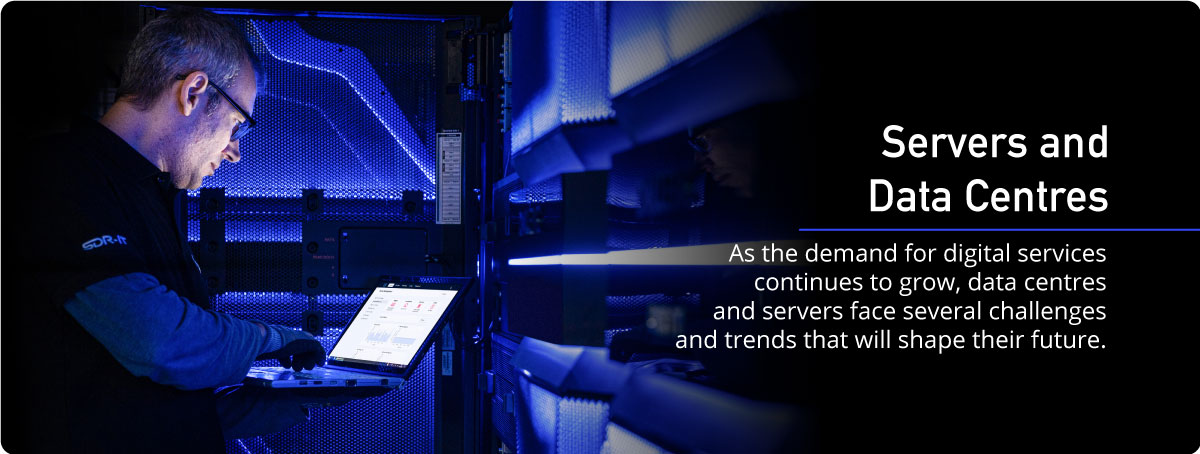/Servers and Data Centers


Data centers and servers are the backbone of today's digital world. They store, process and transmit huge amounts of data every day, enabling us to access information, communicate with others and conduct business online. In this article, we will outline the importance of data centers and servers, how they operate, and the challenges and trends shaping their future.
What is a data center?
A data center is a facility used to store computer systems and related components, such as telecommunications and storage systems. Data centers are designed to provide high levels of availability, security and reliability to ensure that stored and processed data is always available and protected.
They come in a variety of sizes, from small server rooms to large corporate facilities that can cover hundreds of square meters. Some data centers are owned and operated by individual organizations, while others are operated by third-party service providers and offer hosting services to multiple customers.
How do the servers work?
Servers are the backbone of data centers, providing the computing power needed to process and store data. A server is a computer system that is designed to provide specific services or resources to other computers or devices connected to a network.
Servers can perform many functions, such as hosting websites, running applications and storing and processing data. A server can be a physical machine or a virtual machine that runs on top of a physical machine. Virtualization technology allows multiple virtual servers to run on a single physical machine, allowing organizations to maximize computing resources and reduce costs.


Challenges and trends
As the demand for digital services continues to grow, data centers and servers face several challenges and trends that will shape their future.
- One of the primary challenges is the need for greater energy efficiency. Data centers consume huge amounts of energy, and as the number of data centers grows, so does their environmental impact. To meet this challenge, data centers are adopting more energy-efficient technologies, such as advanced cooling systems, and using renewable energy sources such as solar and wind power.
- Another challenge is the need for greater security. Data breaches can have serious consequences, both for organizations and individuals. Data centers are implementing more stringent security measures, such as multi-factor authentication and encryption, to protect against cyber attacks.
- In terms of trends, "edge processing" is becoming an important trend in data center and server architecture. It involves processing data closer to the source, reducing latency and improving performance. This is especially important for applications requiring real-time data processing, such as autonomous vehicles and industrial automation.
Summary
Data centers and servers are essential components of the digital infrastructure that supports our modern world. They enable us to access and store vast amounts of information, and provide the computing power needed for critical applications and services. As the demand for digital services continues to grow, data centers and servers will face ongoing challenges and trends that will shape their future. By adopting innovative technologies and strategies, data centers and servers can continue to evolve and meet the needs of our rapidly changing digital world.




